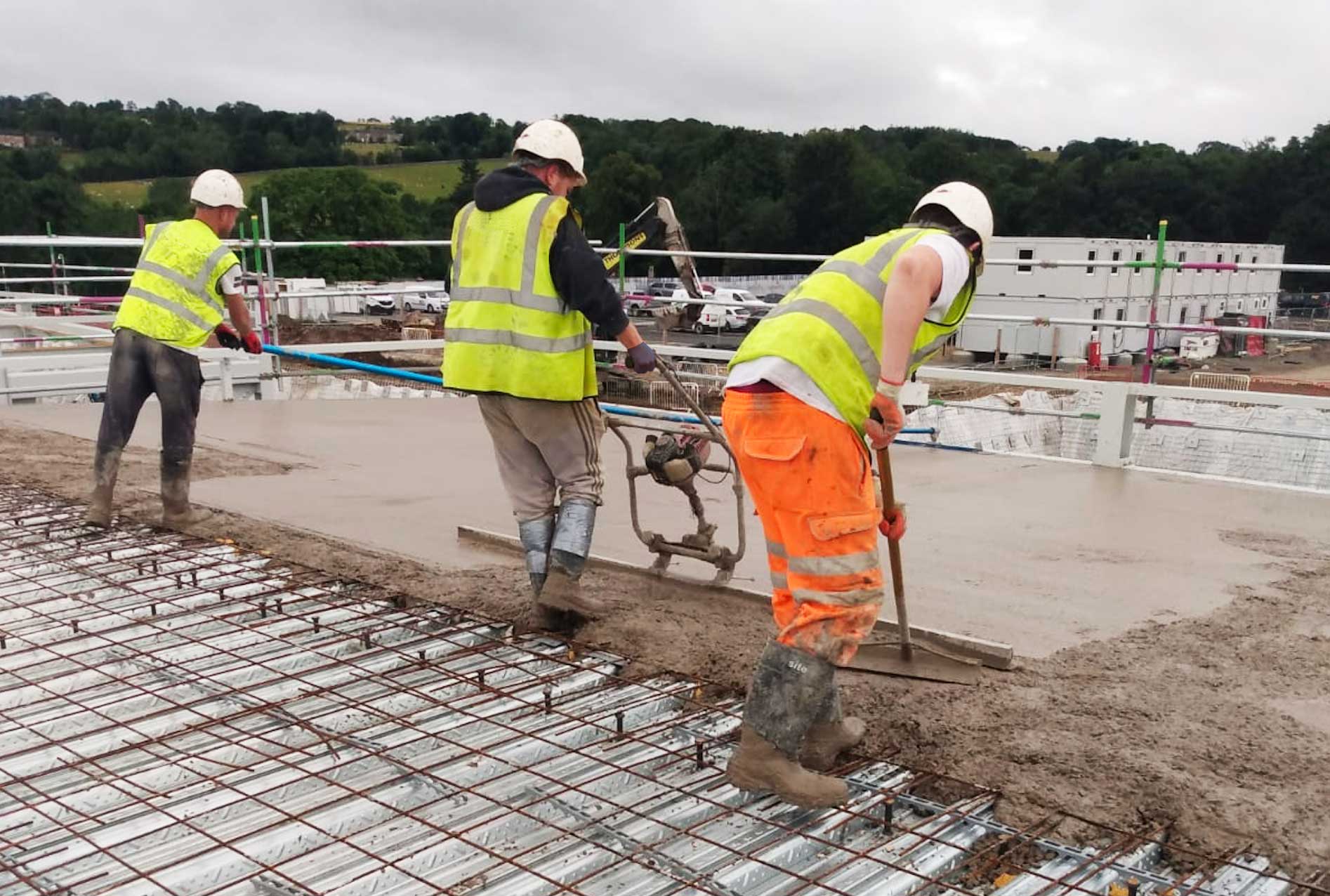Composites: The Future of Sustainable Construction Materials
Composites: The Future of Sustainable Construction Materials
Blog Article
Unlocking the Ecological Benefits of Recycled Compounds in Construction and Style
In the realm of building and layout, the application of recycled compounds holds substantial promise for improving sustainability methods and lowering ecological influence. The change in the direction of a more lasting future in these sectors pivots on opening the full capacity of recycled composites.

Environmental Influence Decrease
The reduction of environmental impact through using recycled compounds in building and style plays a critical duty in sustainable techniques. By integrating recycled composites into structure materials, the building and construction sector can substantially reduce its carbon impact and add to a more eco-friendly future. These lasting materials, made from repurposed plastics, wood fibers, or various other recycled aspects, offer a feasible option to traditional building and construction materials without compromising on top quality or longevity.
Recycled composites aid divert waste from land fills and decrease the need for removing resources, hence saving all-natural resources. In addition, the manufacturing procedure of these composites usually takes in less power and releases less greenhouse gases compared to creating virgin materials (composites). This change in the direction of utilizing recycled compounds not only lessens environmental damage but also advertises a round economic climate by urging the reuse of products that would or else be disposed of
Waste Minimization
With a focus on lessening waste in construction and design, the integration of recycled composites supplies a sustainable option to reduce environmental effect. Waste reduction is a vital facet of lasting practices, and the use of recycled compounds offers an opportunity to accomplish this objective properly. By utilizing materials that have actually currently served their initial function, such as recycled plastics or recovered timber fibers, the building and construction and design industries can substantially lower the amount of waste generated and sent to landfills.
Recycled composites have the prospective to divert considerable quantities of waste from traditional disposal methods, contributing to a more circular economic climate where sources are made use of successfully. In addition, the manufacturing process of recycled composites frequently takes in less energy and produces fewer discharges contrasted to virgin materials, further decreasing the environmental footprint of construction and design projects.
Executing waste reduction approaches with the consolidation of recycled composites not only aids in preserving all-natural resources however likewise promotes a more lasting technique to building and developing for a greener future.
Energy Preservation
Incorporating recycled composites not just lessens waste in building and design but additionally plays a critical duty in improving power preservation techniques within the sector. The usage of recycled compounds in building can significantly add to energy conservation with various methods. The production of virgin products normally needs significant energy inputs, whereas making use of recycled composites takes in much less energy, consequently decreasing overall power usage. Additionally, incorporating recycled composites can add to much better insulation buildings in buildings, lowering the requirement for too much home heating or cooling, and consequently lowering energy usage for climate control. In addition, the lightweight nature of many recycled compounds can cause lighter structures, needing much less power for you can try here transportation and installment. By advertising the use of recycled composites in building and construction and layout, the sector can make significant strides towards accomplishing power performance and decreasing its carbon impact, eventually adding to an extra sustainable built atmosphere.
Carbon Impact Reduction
Enhancing sustainability practices with the usage of recycled composites in construction and layout dramatically lowers the carbon impact of the market. By integrating recycled materials into the manufacturing of compounds, the requirement for virgin resources decreases, leading to reduced power intake and greenhouse gas exhausts related to typical manufacturing processes. This decrease in carbon footprint is crucial in combating climate adjustment and promoting an extra eco-friendly method to construction and design.
In addition, using recycled composites also helps in drawing away waste from garbage dumps, thereby minimizing the ecological impact of disposal and advertising a circular economic situation. The carbon footprint reduction attained through the fostering of recycled composites aligns with the international push in the direction of sustainable methods and the reduction of commercial discharges. It showcases a dedication to accountable source administration and a shift in the direction of this website greener alternatives in the building and design markets. Ultimately, by focusing on the assimilation of recycled composites, the sector can make significant strides in reducing its carbon impact and adding to an extra sustainable future.
Lasting Future
The assimilation of recycled compounds in construction and design not just addresses instant ecological concerns yet likewise lays a strong foundation for a lasting future in the industry. By including recycled composites right into building products and products, the building and construction and style sectors can significantly minimize their reliance on virgin sources, resulting in an extra circular economic situation. This shift in the direction of sustainability is vital for alleviating the environmental effect of traditional building and construction practices, which commonly hop over to these guys result in high degrees of waste generation and resource deficiency.

Conclusion
To conclude, recycled composites offer significant environmental benefits in building and style by lowering ecological impact, minimizing waste, conserving energy, decreasing carbon footprint, and promoting a lasting future. Welcoming the usage of recycled compounds can add to an extra environmentally-friendly approach to building and design, inevitably resulting in a more sustainable and greener future for all.
The reduction of environmental effect with the usage of recycled composites in building and design plays a vital role in sustainable techniques.With an emphasis on lessening waste in construction and design, the integration of recycled compounds offers a sustainable remedy to minimize environmental effect. By advertising the usage of recycled compounds in construction and layout, the market can make substantial strides in the direction of accomplishing power effectiveness and minimizing its carbon impact, eventually adding to a much more lasting built setting.

Report this page